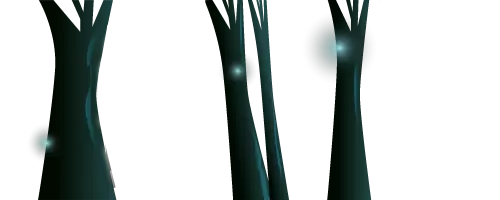PSYCHEDELICS AND THE ARTS: TRIPPY FILMS, BOOKS AND PAINTINGS

Psychedelics trigger all kinds of things in us. They provide us with uniquely enlightening insights and life lessons, for instance. But psychedelics have also regularly contributed significantly to the creation of art. From music to paintings, films and books, these are some of the finest examples of how psychedelic experiences have been used in art. Some will undoubtedly surprise you!
Trippy films: also fun with psychedelics on
Watching films under the influence of psychedelics such as magic mushrooms and truffles is quite an experience. Especially if you choose a film that seems exactly made for this. For decades, we have seen striking and less striking references to psychedelics such as LSD and DMT. 'Fear and Loathing in Las Vegas' and 'Requiem for a Dream' are cult classics about boundless substance abuse that you've probably already seen.
The film Enter the Void is just such a trip, where watching it makes you feel like you're on something yourself. It is a rather dark masterpiece, which is still full of colours and visuals. Various psychedelic substances pass by, and you are almost literally sucked into the main character's DMT trip - including a real out-of-body experience. Which is exactly what the makers of this film intended. If you have never tried DMT before, this work gives you an insight into what such a trip can be like.

Terence McKenna in the Amazon
What happens when you drop the Godfather of psychedelics into the Amazon, even during the heyday of psychedelics? You can see the answer in the 1971 experimental documentary 'True Hallucinations'. This docu gives an insight into the mind of McKenna, who is an absolute inspiration to many even today. And the great thing is: it is on YouTube in its entirety.
Animated films: these must-see classics
Did you know that the Beatles also delivered a psychedelic film? Yellow Submarine is considered a "trippy cult classic" by the BBC and others. This animated film dates from 1968; in the middle of the famous flower power period, when whole days tripping on LSD was still quite normal. Especially for bands like the Beatles, who weren't averse to a dab here and there. The whole film exudes freedom, joy and is surprisingly well suited for children. Even though it is a pretty trippy adventure, real overt references to psychedelics are omitted in this film. But anyone who has ever tripped knows exactly what this film is about... Pink Floyd also released a psychedelic film, by the way, which gets good reviews on IMDB. If you haven't seen 'The Wall' yet, then this is definitely one for your list.
Books about and thanks to psychedelics
The number of books written about psychedelics is endless. Among these is a lot of non-fiction, for instance about growing magic mushrooms or the effects of psychedelics. And DMT: The Spirit Molecule is a must read for those who want to try to understand how this wondrous little substance still produces such uncontrollable but wonderful trips. This has also been made into a documentary, by the way, for those who are not readers.
Books in the fiction category are more akin to art, and in this regard, there are quite a few written about psychedelics. There are also works that are so surreal that you can hardly believe they were written in a sober state. Alice in Wonderland is a very famous example; this book is the reason why LSD is also nicknamed 'Alice'. Remarkably, this is a children's book, written in 1865. And back then, of course, LSD was far from existing. In modern film adaptations of this book, the story becomes even more overtly a psychedelic experience. Whether the author of the original happened to have a very rich imagination, or still had some magical mind-altering plant growing in the backyard; we will never know for sure.
Psychedelic painting: a feast for the eyes and a feast of recognition
Psychedelics and painting are a good match. A number of well-known artists have been able to immortalise visuals and typical trip experiences on canvas. Take Salvador Dali; who doesn't know the painting with the melting clocks? A pretty strong metaphor for how your perception of time changes quite a bit when you are tripping. The feeling of melting is also a comparison many people have made at some point during a trip.
If you do not yet know Paul Laffoley's works, then it is definitely recommended to delve into them. His large and highly detailed paintings incorporate theories on everything from metaphysics to deep philosophical thoughts, time machines and historical events. They are packed with associations and described as nothing less than portals to other dimensions. For most viewers, his works will be incomprehensible, but even so, they are fascinating and above all: impressive. Indeed, he can easily take a full year on one work.

















